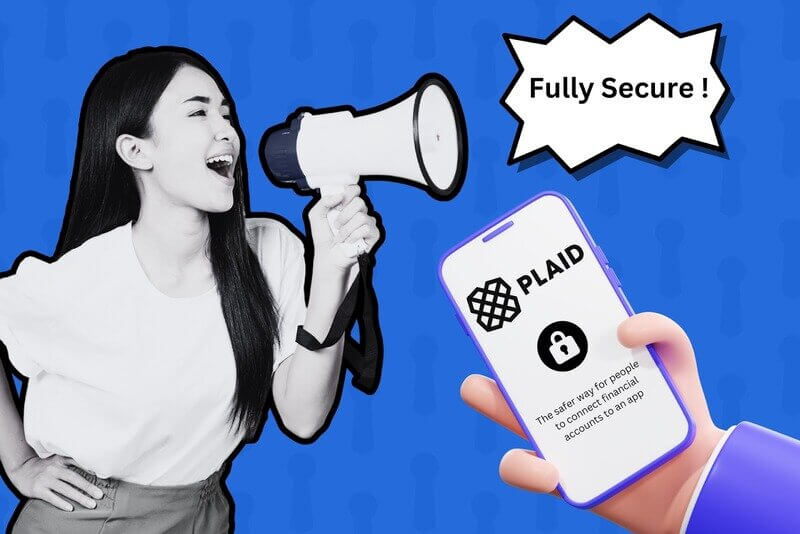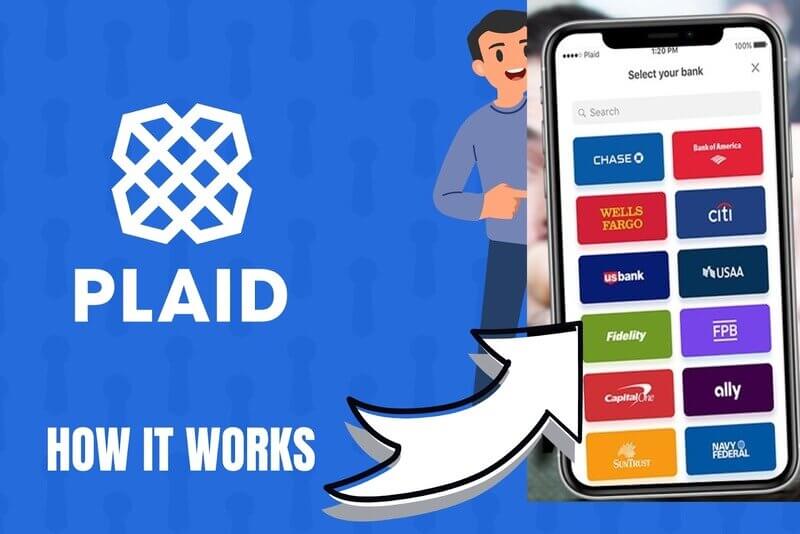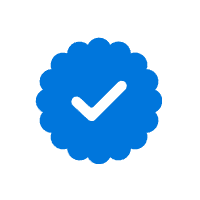What Is Plaid App and Is It Safe To Use for Banking?
I have to confess: Every time I see the Plaid logo, I feel a sense of dread.
It has nothing to do with the service itself and everything to do with my password recall (or total lack of it).
My passwords are on autopilot. In case you didn’t realize it, password-keeper apps like Bitwarden, Dashlane, and 1Password tuck all your passwords into a virtual lockbox. If you need a password, it grabs it for you.
That doesn’t work with Plaid, which means one thing:
I have to remember my password.
Plaid connects to 11,000 financial institutions within the U.S., Canada, and Europe. When you’re using a service that directs you to Plaid, you simply choose your bank from the drop-down box and input your username and password.
Then wait for it to tell you that’s not the right password and do it again.
(Oh, that’s just me? Okay.)
It’s not like we easily can choose not to use Plaid. Not if we want to sign up to trade stocks using certain online platforms or accept payments for our business using the most popular payment apps.
So the next concern is whether Plaid is safe. Let’s answer that question.
What is Plaid App? Is It Safe and Trustworthy?

Some apps require that you connect up your bank account for automatic transfers.
When I chose to take advantage of an online bank’s great rates on CDs, for instance, Plaid made it easy to move funds from my existing bank to the new one.
When you link up to Plaid, you input your bank account username and password to connect. That information is not shared with the third-party app, keeping your sensitive data private.
However, when you agree to use Plaid, you also agree for it to access the following information:
- Your contact information
- Your account numbers
- Your account balances
While Plaid is supposedly only using this information to link accounts, that level of information is understandably concerning. What if that information ended up in the wrong hands?
That’s why looking at just how safe this application is is important.
First, though, let’s see why we’d want to use Plaid in the first place.
Benefits of Plaid
Usually, this would be where I discuss why you’d want to use Plaid.
But in my case, I didn’t choose to use Plaid. I used a specific app that needed to connect to my bank account to proceed.
You can use Plaid for online shopping and other transactions, but I’d rather keep my credit card (and its zero fraud liability) for that!
Here are some benefits if you’re about to connect your bank account to an app using Plaid.

1. Protects Financial Information
For a long time, I procrastinated moving my funds to a bank that would pay higher interest.
It just felt like such a pain. I figured there’d be paperwork and all kinds of security protocols.
I accepted some ridiculously low interest rates on my savings to avoid it. Yet when interest rates started climbing last year, I couldn’t put it off anymore. I had to make a move.
I was stunned at how easy it was. And it was thanks to an app called Plaid.
I linked the two accounts and moved the money. Later, I needed to move some more money, which was equally painless (as long as you can keep up with your bank password).
The biggest benefit of Plaid is that it eliminates the need to hand your bank account information to dozens of apps: Venmo, Acorns, Robinhood, and SoFi. So many apps use Plaid to connect to your bank account.
Each time you connect to transfer funds, these apps go through Plaid, which takes a few extra minutes but gives you extra security.
2. It’s Free
Sometimes you need money moved to or from your bank account.
One way to do this is through the Automated Clearinghouse (ACH).
If you’ve ever paid through direct deposit, you know how that works. You’ll fill out some paperwork and give your authorization, then, at the designated time, the money will appear in your account.
To consent to ACH, though, you’ll have to provide your bank account numbers. And that’s something you’ll only want to do with sources you trust.
Plaid moves the money securely from your bank account to a third-party app. The transfer happens as seamlessly as it would if you used a wire transfer or ACH.
Best of all, it’s free for the consumer. Plaid makes its money off the app that uses it. It collects a small fee for each transfer.
3. Data Is Not Stored
When I first learned about Plaid, I was hesitant. What is this service? Is it storing my password for life? What if it’s hacked?
It’s important to note that Plaid does not store your information.
When you tell Plaid to get your bank account, Plaid simply passes you over to your bank. You input your username and password there. Think of Plaid like a courier, passing a sealed envelope from the bank back to the app.
Most of the time, Plaid won’t even have the information. But even if the username and password are passed through Plaid, the service does not store the data on its server.
This is important at a time when we’re all worried about data breaches.
4. Plaid Locks It Down
Plaid takes security seriously. And can you blame them? Security is their primary job.
Here are some things Plaid does to keep your information safe:
- End-to-End Data Encryption: From the time you connect to Plaid, the data you enter is encrypted. Encryption uses algorithms to ensure that information is encoded as it moves from one point to another.
- Multifactor Authentication: Plaid integrates with existing apps, working with their multifactor authentication to keep your information safe.
- Continuous security monitoring: Plaid has a security team monitoring its API and components.
- Third-party security reviews: With its API resting on many different platforms, Plaid also dedicates itself to regularly auditing those third parties.
If privacy is your concern, it’s also important to look at Plaid’s data privacy policy. Plaid will not sell or share your data.
5. No Separate Membership Required
If you’re thinking, “Oh no! Not another app,” don’t worry.
You don’t have to sign up with Plaid. It’s integrated into the apps you use. You’re good to go if you have an account with the app.
Think of Plaid as a browser extension. It’s an app extension that helps make your app a little safer.
6. Multiple Accounts Allowed
Plaid doesn’t just link to one bank account. You can permit it to link to multiple banks and your favorite credit card.
Even at the same bank, you can link as many of your checking and savings accounts as you want.
You can even use Plaid with Google to link your bank accounts, PayPal, and prepaid cards for an extra layer of security.
7. International Support
Although banks are limited to the U.S., Canada, and Europe, Plaid strives for a global presence.
It works with services like Wise, specializing in funds transfers from one currency to another.
Plaid is constantly working to move into new areas of the world, primarily through forming partnerships with apps outside the U.S. and Canada.
This expansion can make a big difference if you’re outside North America or regularly exchange funds with those outside North America.
8. Bug Reporting Is Incentivized
You’re ready to get your investment account going, but when you try to set things up, the system locks up, and you’re booted out. That sort of programming flaw can make technology a pain some days.
Plaid takes bugs seriously, implementing a bug bounty program that rewards bug reporting.
Yes, you could make money by reporting issues you find while using Plaid.
You won’t be paid simply for reporting it. The developers will need to investigate and take action. The more critical the issue is, the more your payout can be.
This helps keep Plaid’s interface user-friendly to ensure your transactions are seamless.
Risks of Using Plaid
Even with security protocols in place, there are some risks to using any internet-connected application.
Here are some things to consider if you’re on the fence about using an app that requires Plaid.
1. Data Breaches
Plaid clarifies that it does everything possible to keep your data safe.
But nothing is 100 percent guaranteed.
Plaid settled a class action lawsuit alleging the company shared data with third parties and lacked transparency.
Part of the settlement requires that Plaid reduce the amount of data it stores. This could explain the repeated assurances on Plaid’s website that data isn’t stored.
One of the biggest issues with new apps is that we often don’t know what’s being breached until much later. That’s why there’s always a risk when we’re transacting online.
Yet we face that risk with every online service we use.
2. Account Incompatibility
Plaid works with 11,000 financial institutions, but that doesn’t mean yours will be one of them.
There are banks of all sizes, even in the U.S. If you bank with a tiny community lender, you might not find it listed.
Even bigger banks can lose access at any time. Chase and PNC Bank have toughened requirements for third-party apps in recent years, requiring services like Plaid to make adjustments.
The bad news is this sort of change can cut off access without notice.
The good news is, when something like this happens, it’s all in the name of keeping consumers safe, which is exactly why we’re discussing this.
3. Temporary Account Lockout
We’ve already established that I have some password anxiety. Will I remember my bank password, or will I lock myself out of my account?
The latter is a real possibility, assuming your bank has safeguards. Too many tries and you may be unable to get in for a few hours or even a day.
In some cases, you’ll have to contact customer service and answer a bunch of questions to get your account unlocked.
(Hot take: Calling customer service is worse than trying to remember a password.)
That said, if you want to move money to or from your bank account, you’ll need to come up with that password. It’s not a Plaid risk as much as a “multiple account” risk.
Safety Tips While Using Plaid

As I mentioned before, we don’t choose to use Plaid. We chose to use an app that uses Plaid as its bank connector.
Here are some things to do to stay safe while using the apps that use Plaid.
1. Be Cautious With New Apps
A variety of apps choose Plaid to facilitate bank account transfers.
That doesn’t mean every app that uses Plaid is 100 percent trustworthy.
Doing plenty of research before sharing your financials with any app is important. An app may see details about your financials that you don’t want it to see.
In other words, scrutinize the app you’re using to link to your bank account as much as, if not more than, you’re scrutinizing Plaid.
2. Enable Multifactor Authentication
Plaid uses multifactor authentication to protect accounts. Yet that service is dependent on how the app integrates with the other apps you use.
That’s why ensuring multifactor authentication is enabled both on your banking app and the app you’re using to connect to it is important.
Multifactor authentication puts a layer of security on top of the username and password you use to log into an app. Typically, this is done through a code sent to a secondary device or account. You might get the code via a text, for instance, or your email account.
How does this protect you? If a stranger tries to enter your account, the code will come to your phone or email inbox. If you don’t verify, access isn’t granted.
It’s just another way to keep your accounts safe.
3. Keep an Eye on Your Accounts
When money flows in and out of your bank account, keeping an eye on things is important.
Not only will this help alert you to any potential fraud, but you’ll also be able to keep an eye on any money being moved between your account and the approved app.
Contact your bank’s customer support immediately if you see signs of fraud. You may need to put an alert on your account.
The best thing about checking your accounts daily is catching fraud early on. That can help mitigate damages.
You can also set up alerts so that you’re aware any time a charge comes through your account. For instance, you can set a threshold for this if you want only transactions over $100 or $1,000 to alert you.
4. Consider Identity Theft Protection
When you’re handing over information like your name, address, phone number, and banking location and numbers, it’s natural to worry about identity theft.
A scammer could apply for credit in your name with just some of that information.
In most cases, someone would need your Social Security number to accomplish that. But some identity thieves conduct something known as synthetic identity theft, where pieces of our information are combined with data found on the Dark Web (and elsewhere) to either steal an existing identity or create a new one.
Identity theft can lead to months of nasty communications from debt collectors and a rapidly declining credit score. It might take years for you to clean up the mess.
That’s one thing I love about identity theft protection. Services like Aura, LifeLock, and IdentityForce help cover the cost of repairing the damage if your identity is stolen.
You can also rely on their expertise to help with that cleanup. Since many of us don’t have extensive experience in convincing a creditor we aren’t the ones who applied for that loan, that can be a huge help.
Lastly, identity theft protection services will monitor for signs of fraud and let you know if something suspicious is detected. This can help you catch things early and take action before it worsens.
Conclusion
If you haven’t yet used Plaid, you may eventually. Its partnerships seem to be growing. If you decide to start investing or want multiple bank accounts, you may run into Plaid as part of the setup process.
The service is safe overall, although there are always risks when transacting on the Internet.
Your information should be secure as long as you’re cautious about the apps you use to connect to Plaid. But you can enhance that security by using multifactor authentication, getting identity theft protection from a service like Aura, and choosing a unique password for each signup.
✎ Let’s take a closer look at the topic of financial scams and learn how we can safeguard our financial security:



